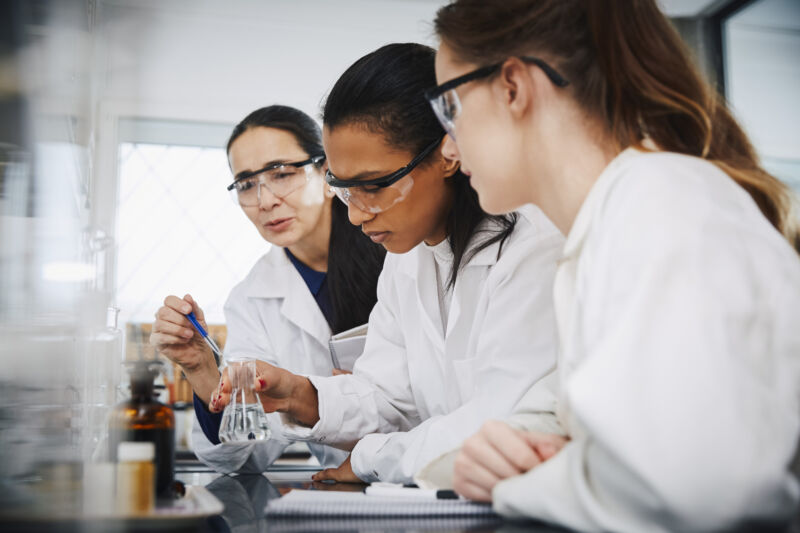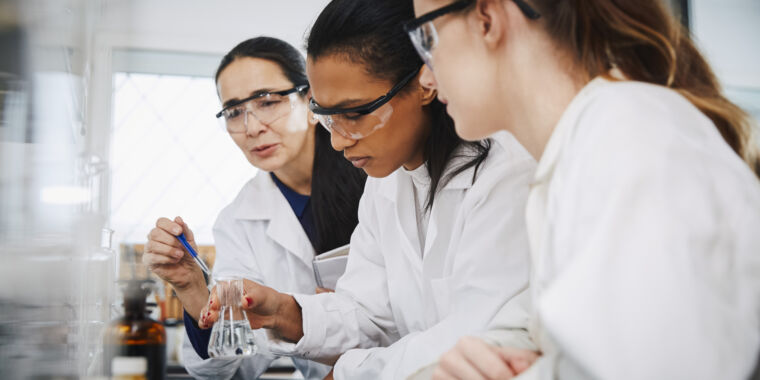
To graduate with a science major, college students must complete between 40 and 60 credits of science courses. That means they spend about 2,500 hours in the classroom during their undergraduate career.
However, research has shown that despite all that effort, most science courses at university give students only a fragmented understanding of fundamental scientific concepts. The teaching method reinforces memorization of isolated facts, moving from one chapter in the textbook to another without necessarily making connections between them, rather than learning how to use the information and view those facts in a meaningful way to relate to each other.
The ability to make these connections is also important outside of the classroom, as it is the foundation of scientific literacy: the ability to use scientific knowledge to accurately evaluate information and make decisions based on evidence.
As a researcher in chemistry education, I have been working with my colleague Sonia Underwood since 2019 to learn more about how chemistry students integrate and apply their knowledge to other scientific disciplines.
In our most recent study, we examined how well students could use their chemistry knowledge to explain real-world biological phenomena. We did this by having them do activities designed to make those interdisciplinary connections.
We found that while most students wouldn’t have had comparable opportunities to prepare them to make those connections, activities like these can help — if they become part of the curriculum.
Three-dimensional learning
A large body of research shows that traditional science education, for both STEM and non-majors, is not good for teaching STEM students how to apply their science knowledge and explain things they may not have learned directly.
With that in mind, we have developed a series of interdisciplinary activities guided by a framework called ‘three-dimensional learning’.
In short, three-dimensional learning, known as 3DL, emphasizes that teaching, learning and assessing students should involve the use of fundamental ideas within a discipline. It should also involve tools and rules that support students in making connections within and between disciplines. Finally, it should involve students in using their knowledge. The framework was developed based on how people learn as a way to help all students gain a deep understanding of science.
We did this in collaboration with Rebecca L. Matz, an expert in science, technology, engineering and math education. Then we took these activities to class.
Making scientific connections
To start with, we interviewed 28 first-year students with a science or technology specialization. All were enrolled in both introductory chemistry and biology courses. We asked them to make connections between the content of these courses and what they thought were the take-home messages of each course.
The students responded with comprehensive lists of topics, concepts, and skills learned in class. Some, but not all, correctly identified the core ideas of each science. They understood that their chemistry knowledge was essential to their understanding of biology, but not that the reverse could be true.
For example, students talked about how their knowledge gained during their chemistry class regarding interactions — that is, attractive and repulsive forces — was important in understanding how and why the chemical species that make up DNA come together.
For their biology course, on the other hand, the core idea the students talked about the most was the structure-function relationship — how the shape of the chemical and biological species determine their work.
Subsequently, a series of interdisciplinary activities was designed to guide students in using core ideas and knowledge of chemistry to help explain real-world biological phenomena.
The students assessed a core chemistry idea and used that knowledge to explain a familiar chemistry scenario. Then they applied it to explain a biological scenario.
One activity examined the effects of ocean acidification on seashells. Here, students were asked to use basic chemistry ideas to explain how increasing levels of carbon dioxide in seawater affect shell-forming marine animals such as corals, clams and oysters.
Other activities asked the students to apply chemistry knowledge to explain osmosis — how water moves in and out of cells in the human body — or how temperature can change the stability of human DNA.
Overall, the students were confident in their chemistry knowledge and could easily explain the chemistry scenarios. They had a harder time applying the same chemistry knowledge to explain the biological scenarios.
In the ocean acidification activity, the majority of students were able to accurately predict how an increase in carbon dioxide will affect the ocean’s acidic levels. However, they were not always able to explain how these changes affect marine life by hindering shell formation.
These findings highlight that a large gap remains between what students learn in their science courses and how well prepared they are to apply that information. This problem persists despite the fact that in 2012, the National Science Foundation released a series of three-dimensional learning guidelines to help educators make science education more effective.
However, the students in our study also reported that these activities helped them see connections between the two disciplines that they would not have otherwise observed.
So we also came up with evidence that at least our chemistry students would like to have the opportunity to get a deeper understanding of science, and how to apply it.![]()
Zahilyn D. Roche Allred, postdoctoral scientist, Department of Chemistry and Biochemistry, Florida International University
This article is republished from The Conversation under a Creative Commons license. Read the original article.

